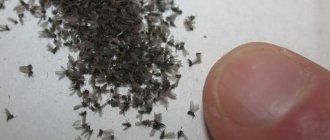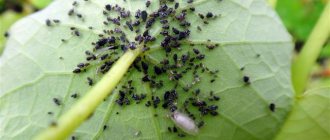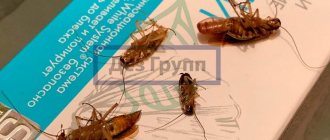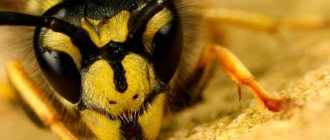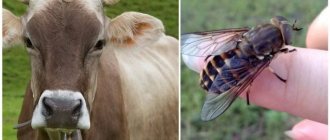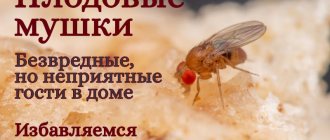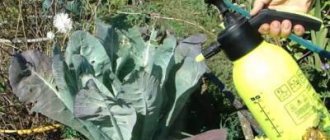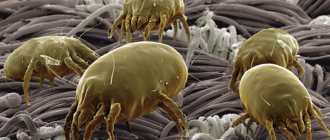The orchid is perhaps one of the most common and favorite houseplants of many gardeners. The period of orchid flowering causes special delight among housewives. Despite the fact that the orchid is considered a tropical plant, the fruits of the flower are also grown in Southeast Asian countries. Most people consider the orchid to be a very capricious flower, associating this with the presence of numerous difficulties in care.
One of the difficulties in caring for an orchid is associated with the appearance of midges in the soil or on the leaves of the plant. The problem is very common, so in this article we will try to find out the reasons for the appearance of midges, share tips on how to get rid of them, and also talk about effective preventive measures to avoid the appearance of insects in the plant in the future.
Causes of pests on orchids
Insects can appear on plants for several reasons:
- Contaminated soil. If the soil mixture was prepared incorrectly and was not disinfected before use, eggs or larvae could remain in it. If you transplant an orchid into it and then water it, conditions favorable for the development of pests will be created. The midges will begin to actively reproduce.
- Excessive watering. Midges can enter a house through a window, but unless they find suitable conditions, they will not stay indoors. If there are plants inside with constantly moist soil, insects will take up residence there.
Insects leave noticeable damage on orchid leaves
- Using moss. As a rule, gardeners use it to slow down the evaporation of moisture from the soil. If parts that have begun to decompose are not promptly removed, pests appear.
- The use of natural fertilizers: shells, tea leaves, coffee grounds. Decaying organic matter attracts insects.
Important! To choose the right remedy for midges on plants, you need to identify and eliminate the cause of their appearance.
What kind of mosquitoes live in pots of orchids?
Two species have been observed on orchids, representing two different genera of sciarids: Darkwings, or fungus gnats (Sciara) are black adults, 4–6 mm long. Up to 200 eggs are laid in a moist orchid substrate, from which miniature worms without limbs, transparent white in color, with a dark head 4–7 mm long, appear. They prefer to settle in a moist substrate containing sphagnum moss and peat in predominant quantities.
They feed on plant debris while the colony is small, but as their numbers increase, they begin to eat the tips of young roots and young tissue in the lower part of the plant. The life cycle is short - it takes about a month from egg to adult insect. They do not cause devastating harm to orchids, but they significantly weaken the plants and facilitate the penetration of infections through wounds on gnawed roots.
Cucumber gnats (Bradysia brunnipes) are dipterous insects 3.4-4.5 mm long with a dark gray body, brownish wings and yellowish long legs. Outwardly they differ little from fungus gnats, but, unlike them, they prefer to settle not in indoor pots on the window, but in orchidariums or greenhouses.
Females are larger than males and lay up to 240 eggs in the moist top layer of the substrate. After 5–10 days, larvae appear. Although this is an atypical pest of orchids, it can attack them too. The worms make passages in the roots and stems of plants, after 12 days they pupate, becoming covered with a white cobweb cocoon, from which, after another couple of weeks, adults fly out, capable of producing offspring.
Types of midges
Midges in indoor flowers - how to get rid of them at home
You can understand how to get rid of midges in orchids only by first determining their type. It is important to choose an effective remedy that will not harm the plant. Most often, 4 types of insects live in flowers.
Thrips
Small - up to 2.5 mm - dark-colored midges with an elongated body and wings folded on the back. It is not easy to detect them, since they are active in the dark and hide in the soil in the sun. Dry soil is attractive to pests of this type, so you need to water the flower regularly.
A sign of their presence can be dark spots on the leaves. They reproduce quickly and lay eggs on leaves. Adults damage all parts of the plant, sucking out the juice, while the larvae damage only the leaves.
Whiteflies
You can learn about the appearance of white small flies by carefully examining the plant (you can see yellow marks on it) and the soil where the eggs or light-colored larvae will be located. If you touch a flower, butterflies will scatter throughout the room.
Whiteflies live on the undersides of leaves, making them difficult to detect
The larvae feed on leaf sap, so the leaves of orchids affected by whiteflies begin to dry out and turn yellow.
Sciarides
They are black mosquitoes, not exceeding 5 mm in size. They are most active in autumn or spring.
Adults (this is their second name) do not harm phalaenopsis, but lay eggs in the ground. The hatched larvae feed on the roots of the plant. The affected areas of the root system begin to rot, fungus and infections penetrate inside, due to which the orchid may die.
Drosophila
Fruit midges do not eat the plant; they feed on rotting organic matter. As a rule, they appear in groups, hovering over areas of interest to them. They pose a danger because they reproduce at high speed. If you do not remove insects, they will quickly fill the apartment.
Signs of parasites. Why are they dangerous?
The signs of midges appearing on an orchid are quite obvious.:
- In case of infection, brown pigmentation appears on the leaf blades. Later, a white coating may appear in the same place.
- The second sign is the formation of black spots on the surface of the plant, which lead to the formation of so-called “pores”.
- Also on the orchid and on the ground you can find the appearance of a huge number of black and white small midges.
The appearance of pests on the surface of the orchid and the soil will have a very negative impact on your plant. If signs of parasite spread are left unattended, the orchid leaves will remain damaged, and in the worst case, the plant will die. Treatment of a flower must be taken very seriously, and this must be done as soon as possible.
Before finding out the reason for the appearance of midges, it is necessary to understand what kind of pests the plant may be affected by. Sciarids, whiteflies, thrips and fruit flies are the most common and dangerous individuals . They damage both leaves and soil.
The most difficult species to spot in the ground are sciarids. These black insects lay larvae in the substrate, from which worms later emerge. They cause putrefactive processes in the soil and cause the death of the plant.
Midges in orchids: how to get rid of them at home
Mealybug on an orchid: how to get rid of pests and treatments
If there are midges in an orchid, what to do first:
- Place the pot with the infected plant in quarantine for a month, that is, place it separately from other flowers.
- Place the flower under a gentle stream of warm water to wash away larvae, eggs and adults.
- Inspect the soil, stems and leaves, remove any remaining eggs and larvae with a damp cloth.
- Cut off dead and damaged parts of the plant, dust the cut areas with ash or crushed coal.
To remove pests from the roots, the plant is thoroughly washed with warm water.
Important! If the soil is heavily infested with pests, it is necessary to replant the orchid, thoroughly washing the roots.
Traditional methods
What to do if midges appear in the ground in orchids:
- Treat with soapy water. 1 tbsp. l. soap (preferably without dyes and other additives) is diluted in a glass of water. Moisten a cotton pad with the composition and gently wipe all parts of the plant for a week. After a break of several days, another 2-3 treatment cycles are repeated. When the insects disappear, wait a month, after which they wipe the flower once to prevent the reappearance of midges.
- Use garlic infusion. The cleaned head is crushed, poured Art. boiling water The liquid is used in the same way as a soap solution.
- Prepare an apple cider vinegar trap. The liquid is poured into a small jar, mixed with a couple of drops of dishwashing gel, and closed with a plastic lid with small holes made in it. The prepared container is placed next to the flower pot. Midges (fruit flies and sciarids), sensing the smell, will fly inside and die, since they will not be able to get out of the trap.
- Place citrus peels or garlic cloves around the plant. This folk method is based on the fact that strong odors repel insects.
- Prepare a weak solution of potassium permanganate and pour it over the soil. The disinfectant liquid will destroy the eggs and larvae.
- Sprinkle the soil with mustard powder. Repeat the procedure once a week until all midges disappear.
Spraying with garlic infusion is a plant-safe way to remove pests
Chemicals
Getting rid of insects using potent drugs is recommended in extreme cases when other methods have not helped.
The most difficult thing to deal with are sciarids. You will need to use several products in combination: the above-ground parts of the plant are treated with “Raid”, “Raptor” or “Neo Dichlorvos”, for the soil use “Bazudin” or “Grom-2”. Pests can remain not only in the pot, but also on the surfaces around it, so you need to wipe the windowsill with a disinfectant.
Actillicom is suitable for killing thrips. The infected plant is treated with this drug three times over a period of 10 days.
“Actellik” also effectively copes with whiteflies. They are also removed using insecticides “Sherpa” or “Fury”. To get rid of eggs and larvae, the soil is spilled with water.
How to get rid of it at home using biological methods
If midges appear in orchids, you can get rid of them using home remedies:
- Vacuum cleaner. It will help collect whiteflies. When you touch the phalaenopsis, the butterflies immediately fly up, disturbed. You can take advantage of this behavioral feature of theirs. You need to turn on the device in advance and point the end of the suction tube (it is better to remove the nozzle) just above the plant. Touch the orchid and the whiteflies will fly up and be sucked in. It will not be possible to collect all the midges at once; you need to repeat the operation several times, taking breaks.
- Fly tape. A ribbon hung near an infested plant will collect most of the adults.
- River sand. It is pre-calcined in the oven and then poured in a thin layer onto the ground. Monitor the condition of the plant: after a few days all the midges should disappear, and if this does not happen, the procedure is repeated.
- Soil washing. Since the most difficult thing is to remove not the adults, but the larvae, you need to thoroughly wash the soil every 4 days.
Note! If there are fruit flies in the house and flower pot, you need to fight them differently. You should throw away the remains of moss, tea leaves and other natural fertilizers, if they were used, and reduce the frequency of watering. Inspect the room, remove all food that attracts fruit flies (fruits, vegetables).
To get rid of fruit flies, all moss from the ground must be removed
What kind of midges live in orchids?
Contents of the article:
- 1 What kind of midges live in orchids? 1.1 Midges in orchids. What should I do?
- 1.2 Fungus gnat in an orchid
- 1.3 Thrips in orchids
- 2.1 Where do midges come from in orchids?
- 3.1 Measures to combat midges in orchids
- 4.1 Fighting midges
- 7.1 Where do midges come from in orchids?
- 8.1 Method - how to get rid of insects
- 9.1 Scary and terrible
- 10.1 Types of midges in orchids
Midges in orchids. What should I do?
If you notice that midges are flying around a pot with an orchid, then you may have questions:
- What kind of midges live in orchids?
- Are midges dangerous in orchids?
- What needs to be done and how to get rid of midges in orchids?
- Today's article is dedicated to answering these questions.
Midges that infest orchids can be “harmless” fungus gnats or “harmful” thrips. In order to choose the right means of protection, it is necessary to identify the flying insect.
First, analyze your watering regime and make sure that you do not overwater the orchid and leave two or three dry days between waterings. In this case, dry days are considered not those days when the soil dries out on the surface of the pot, but those days when the soil dries out completely throughout the entire depth of the pot.
https://youtube.com/watch?v=GySTAsWgLpQ%3Ffeature%3Doembed
For more information on how to determine whether the soil in a pot with an orchid is dry, read the article “How often to water an orchid.” Next, evaluate whether there is damage to the orchid leaves: multiple dark spots or a silvery film.
Fungus gnat in an orchid
If you water the orchid frequently and do not leave two or three dry days between waterings, and there are no characteristic damages on the leaves (multiple dark spots or a silvery film), then in your case, most likely, a fungus gnat has appeared in the orchid.
To finally make sure of this, evaluate the habitats and appearance of the midges.
Where do they live? Fungus gnats live in the ground. If we talk about orchids, then, as a rule, fungus gnats settle in those pots in which the soil consists not only of bark, to which moss or peat is added.
Important! Mosquitoes live in clean bark only if the bark has already decomposed. In particular, fungus gnats came to our house and lived in plants that grow in the soil, but they were not interested in orchids that grow in the bark
Appearance? Adults look like small black mosquitoes; in fact, they are most often represented when people talk about “midges.”
Are they dangerous? Adult fungus gnats do not cause harm. Damage can be caused by larvae, which in large numbers can damage the roots.
How to treat? The main method of protection is drying: in dry soil the larvae will not hatch, and the adults live for two weeks. Start by reducing watering of the orchid. Additionally, you can buy yellow sticky tape at the flower shop to collect the adults.
Or put a yellow saucer with water - mosquitoes fly towards the yellow color. As a last resort, you can replace the soil by washing the orchid roots to remove mosquito larvae. And in the future, follow the general rules for watering orchids.
Thrips in orchids
Thrips in orchids If you notice that multiple bites have appeared on the leaves, which on the green leaf of the orchid become white, silver, and darken over time, then there is a high probability that your orchid is being devoured by thrips.
Where do they live? Thrips, unlike mosquitoes that live in the ground, live on leaves and actively feed on orchid leaves.
Appearance? They have an elongated shape, a striped abdomen and two wings.
Thrips, rather, do not even fly, but quickly run and hide in the bark. Multiple damage appears on the leaves - bite sites,
Are they dangerous? Thrips, unlike fungus gnats, cause significant harm to the orchid. Insects pierce plant cells and completely suck out the juice from them. Fungi may grow in the bite areas.
The orchid leaf itself receives not only and not so much a decorative defect, but dies, deprived of cell sap. Therefore, if thrips are found on an orchid, you should not delay their destruction.
How to treat? For treatment, it is necessary to rinse the orchid in the shower (during the next watering), which will wash off some of the individuals, and treat the orchid with Fitoverm (or another drug for thrips) according to the instructions at least 3 times with an interval of 10 days.
Prevention of infection
Whitefly on indoor plants - how to deal with it at home
To prevent insects from starting again, you should follow some rules:
- Sprinkle the soil purchased for indoor plants with plenty of water and then place it in the freezer for several days. During this time, the larvae, if they are present in the soil mixture, will die.
- Do not immediately place a purchased new flower in a room where others are located, but place it in a separate room. If after a month there are no pests on it, you can move it to the others. However, it is not recommended to keep the entire collection on one windowsill.
- Install mosquito nets on the windows to prevent insects from entering the house from the street.
- Keep the room where the orchid is kept clean and promptly throw away spoiled fruits and vegetables.
- New pots, before transplanting the plant into them, should be disinfected: pour boiling water over them or rinse with a manganese solution.
What to do?
To understand how to remove insects and what needs to be treated, you need to determine what type of pest attacked your plant. But there are general rules for destroying midges, suitable for all types of attackers:
- Place the affected flower in an isolated place for at least a month.
- Rinse off all visible midges with warm water. This can be done with a damp cloth or with a powerful spray. This procedure will help get rid of most of the midges.
- Trim off all affected areas of the orchid. Don't forget to treat the cut areas with wood ash.
The flower can be treated with both folk and pharmaceutical chemicals. But experienced gardeners recommend resorting to the help of the latter only in very extreme cases. Folk remedies include:
- soap solution (pour one teaspoon of liquid soap into 0.2 liters of water);
- garlic tincture (pour boiling water over five crushed cloves of garlic) (it is also recommended to simply place a clove of garlic in the soil);
- a solution of olive or grape oil (pour a tablespoon of oil into half a liter of water);
- wood ash, which not only reduces the acidity level of the soil, but also feeds it.
TIP: All solutions cover the leaf blade with a dense layer and interfere with the photosynthesis process, so do not forget to wash the drug off the plant in time.
As for insecticides, each type of attacking insect uses its own type of preparation:
- It is better to fight whiteflies with a solution of laundry soap. But if this remedy does not help, use “Aktellik”, “Aktar”, “Bazudin”, “Fury” (the plant must be sprayed with these products every five days). A vacuum cleaner will also help you say goodbye to the majority of adult whiteflies. Scare away the midges, wait until they start flying over the orchid and collect them with a vacuum cleaner.
- Fitoverm or Actellik will help you in the fight against thrips. (Process no more than three times with a time interval of ten days). After the destruction of thrips, it will be necessary to cultivate the soil monthly to prevent the reappearance of these midges.
- Sciarides are easy to defeat without even resorting to chemical solutions. All you need to do is install adhesive tape. Of course, it wouldn’t hurt to treat the soil with an insecticide. (“Raptor”, “Dichlorvos”, “Raid”). It wouldn’t hurt to treat the surface on which the pot with the orchid is located. After using many aerosol insecticides, it is necessary to ventilate the room after a half-hour period.
- For fruit flies, the main blow will be hunger strike. This can be achieved by removing all leftover food from the house, especially rotten vegetables and fruits. Always treat not only the plant itself, but also the soil in which it grows.
Remember that only the correct use of products will help cure an orchid. If you use drugs not according to the instructions, this will lead to even greater infection of the plant or its complete destruction.
Further care
Once the pests are eliminated, it is important to care for the orchid properly. The most important thing is to follow the watering regime: twice a week in the warm season, once in the cold season.
Note! If the soil is still damp, there is no need to water it. The top layer of soil should be dry for at least 2 days beforehand.
It is undesirable to use food waste (for example, tea leaves) as fertilizer. These substances will not provide the plant with everything it needs, but will attract pests. If there is a need for feeding, you should use special ready-made compounds for orchids.
Dying leaves are removed before they begin to rot, becoming food for midges.
Leaves that have turned yellow and have begun to die should be removed.
Periodically, as a preventive measure, it is recommended to wipe the phalaenopsis leaves with a soap solution. It forms a coating that protects the above-ground parts of plants from being eaten by pests. You can also sprinkle the soil with ash or sand, this will prevent insects from penetrating into the soil.
Midges can destroy an orchid, so you need to get rid of them immediately. The listed methods will help cope with the problem, and preventive measures will prevent the reappearance of insects.
Methods for controlling midges
Each type of midge has a corresponding approach to destruction. Having identified each insect, you can describe how to deal with it:
- Drosdophila. The presence of these insects on an orchid requires the removal of excess fallen pieces of the plant, moss and tea. You should also reduce the amount of moisture (watering). If you deprive these insects of food, they will soon leave the orchid. Some gardeners often use special insect traps to speed up the process.
- Sciarides. The fight against these insects is more difficult than against fruit flies. In order to keep the soil clean for the plant, it is necessary to use special sterile mixtures when planting. In cases where the owner of the plant wants to select the soil himself, he should water the soil and freeze it in the freezer. When planting the plant, you do not need to use fertilizers from food waste. They will only attract insects. There are also special medications on sale that will help solve the sciarid problem for a long time.
- Whiteflies. To get rid of the problem of the presence of these insects, it is necessary to use special preparations, such as: Sherpa, Bazudin, Fury, etc. For prevention, you should wipe the leaves with a weak solution of laundry soap.
- Thrips. Special preparations are used for orchids. The soil is soaked and sprayed with Fitoverm and Aktellik. Wipe the orchid leaves and rinse the soil once a month.
Each of the methods of combating this or that insect is simple. If used correctly, the problem will go away, and the flower will live and bloom with renewed vigor. The drugs mentioned in this article are available in specialized stores in large quantities and at affordable prices. There are other medicines, such as: Grom2, Sherpa, Neodichlorvos, etc. Each of them can help in one case or another. But it is worth noting that incorrect handling of these drugs can seriously harm the orchid. How and why can be found in the instructions for the drugs.
https://youtube.com/watch?v=T7qN6292oF4%3Ffeature%3Doembed
Chemicals
Radical measures have to be taken when the substrate is already swarming with larvae; it is enough to lift its top layer 1 cm thick to detect them. Unfortunately, many chemicals are toxic and their use in residential areas is undesirable. It is advisable to move orchids affected by midges to a glazed balcony or veranda and spray there.
In enclosed spaces, treatment with the drugs Largon, Mikromit, Difluorobenzuron is allowed, which can destroy adults and larvae; Intavir and Carbofuran are considered stronger. Teflubenzuron affects the life cycle of sciarids and inhibits the process of transformation of larvae into adults, thus preventing an increase in the size of the colony.
Flower growers speak well of the granular product Grom-2, which is scattered on the surface of the substrate and lightly mixed with the top layer. Its consumption rate per 1 sq. m area is only 1-1.5 g, and it is effective until the granules are completely dissolved within 14 days.
Bayer products are considered harmless to humans, which are used both to prevent the appearance of sciarid larvae and to get rid of adult insects. When using the drugs Regent and Regent-800, you should carefully calculate the dosage. If the standard recommended solution is 1 g in 10 liters of water, then for orchids this norm is reduced by at least half. Finally, proven methods of combating house flies are used - Dichlorvos, Raptor sprays, and against larvae - Fly eater.

